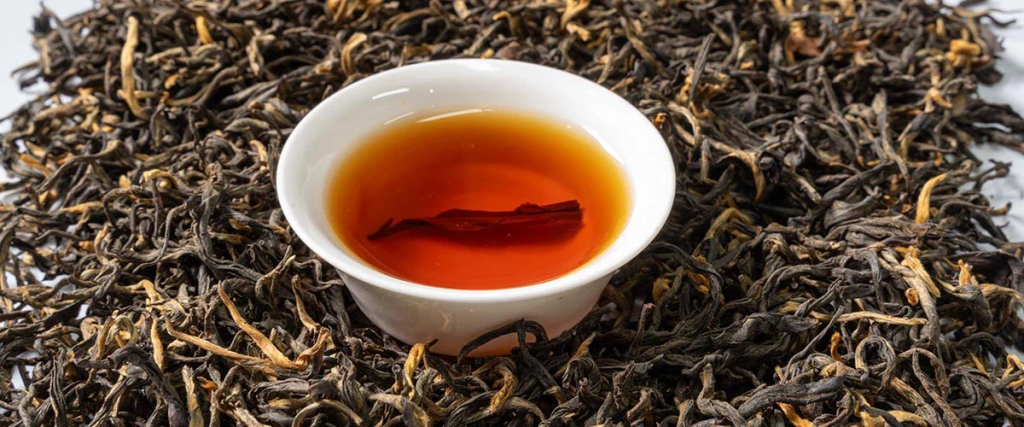Pu’er tea and black tea are both renowned types of tea in China’s rich tea culture. While they share some similarities, there are also distinct differences between the two.

Connections:
- Cultural Significance: Both Pu’er tea and black tea are crucial components of Chinese tea culture, carrying profound cultural connotations and national sentiments. They are both widely consumed and celebrated for their unique flavors and health benefits.
- Fermentation Process: Both Pu’er tea and black tea undergo a fermentation process. However, the fermentation methods and durations differ significantly. Black tea undergoes a full fermentation process, resulting in its distinctive red color and robust flavor. Pu’er tea, on the other hand, undergoes a more complex fermentation process, either naturally over time (raw Pu’er) or through artificial means (aged or ripe Pu’er), leading to its unique aged taste and aroma.
Differences:
- Classification: Black tea belongs to the basic tea categories, which include green tea, black tea, oolong tea, yellow tea, white tea, and dark tea. Pu’er tea, however, falls into the category of reprocessed tea, made from sun-dried green tea leaves through special processing techniques.
- Taste: Black tea has a mellow, fresh, and sweet flavor with a rich aroma. Pu’er tea, in contrast, boasts a full-bodied, aged taste with a unique chenxiang (aged fragrance). The flavor of Pu’er tea can vary greatly depending on its age and storage conditions.
- Processing Techniques: The production of black tea involves several steps, including withering, rolling, fermentation, shaping, drying, refining, and baking. Pu’er tea, especially raw Pu’er, starts with sun-dried green tea leaves from the large-leaf variety of the Camellia sinensis plant, and undergoes additional processes such as piling (fermentation), drying, screening, sorting, and blending.
- Appearance: Black tea typically comes in the form of straight or curly strips with a dark, glossy appearance. Pu’er tea, however, can be either loose-leaf or pressed into cakes, bricks, or other shapes. The color of Pu’er tea ranges from brownish to reddish-brown, depending on its age and processing.
- Brewing Durability: The number of times black tea can be brewed depends on its quality. Lower-quality black teas may lose flavor after 3-5 infusions, while high-quality ones can be brewed 10 times or more. Pu’er tea, due to its large leaves and stems, is highly durable and can usually be brewed over 15 times.
- Health Benefits: Both teas have their unique health benefits. Black tea is rich in phenolic compounds, which have antioxidant, cholesterol-lowering, and anti-atherosclerotic properties. It also helps enhance capillary function and has anti-mutagenic effects. Pu’er tea, with its high vitamin C content, boosts the immune system and has been associated with benefits such as lowering blood pressure, aiding in weight loss, anti-atherosclerosis, dental care, stomach protection, and free radical scavenging.
While Pu’er tea and black tea share some similarities, they differ significantly in classification, taste, processing techniques, appearance, brewing durability, and health benefits. Tea enthusiasts can choose the tea that best suits their preferences and needs.



